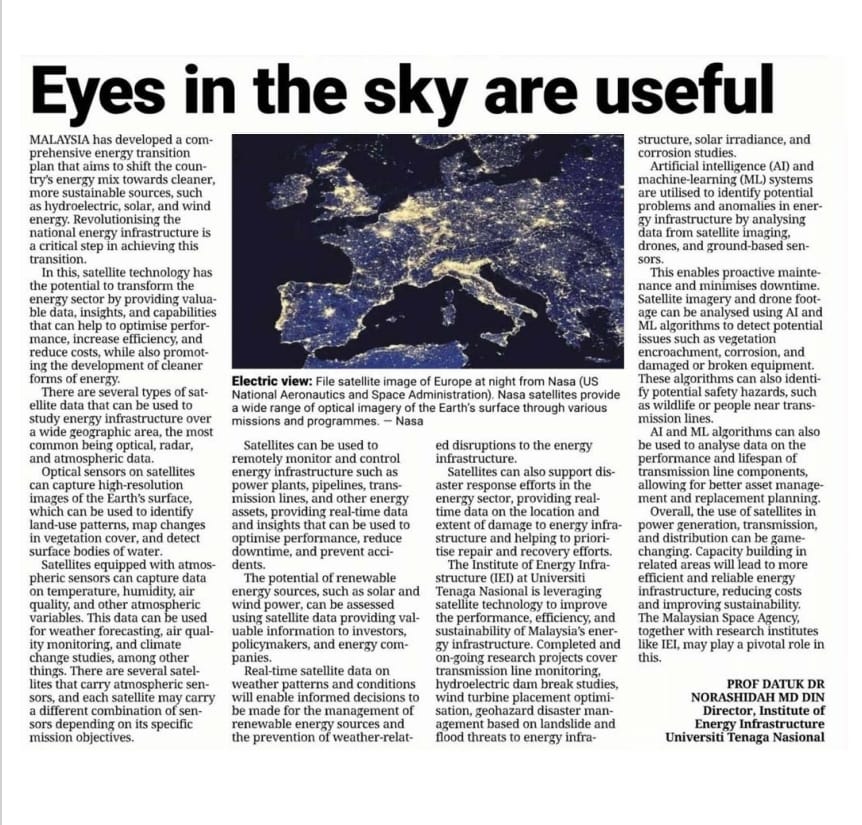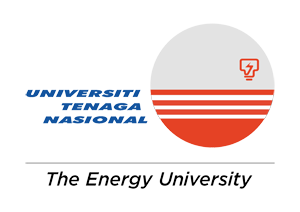
By Professor Dato’ Ir. Dr. Norashidah Md Din
The Star, 11 June 2023
MALAYSIA has developed a comprehensive energy transition plan that aims to shift the country's energy mix towards cleaner, more sustainable sources, such as hydroelectric, solar, and wind energy. Revolutionizing the national energy infrastructure is a critical step in achieving this transition.
In this, satellite technology has the potential to transform the energy sector by providing valuable data, insights, and capabilities that can help to optimize performance, increase efficiency, and reduce costs, while also promoting the development of cleaner forms of energy.
There are several types of satellite data that can be used to study energy infrastructure over a wide geographic area, the most common being optical, radar, and atmospheric data.
Optical sensors on satellites can capture high-resolution images of the Earth's surface, which can be used to identify land-use patterns, map changes in vegetation cover, and detect surface bodies of water.
Satellites equipped with atmospheric sensors can capture data on temperature, humidity, air quality, and other atmospheric variables. This data can be used for weather forecasting, air quality monitoring, and climate change studies, among other things. There are several satellites that carry atmospheric sensors, and each satellite may carry a different combination of sensors depending on its specific mission objectives.
Satellites can be used to remotely monitor and control energy infrastructure such as power plants, pipelines, transmission lines, and other energy assets, providing real-time data and insights that can be used to optimize performance, reduce downtime, and prevent accidents.
The potential of renewable energy sources, such as solar and wind power, can be assessed using satellite data providing valuable information to investors, policymakers, and energy companies.
Real-time satellite data on weather patterns and conditions will enable informed decisions to be made for the management of renewable energy sources and the prevention of weather-related disruptions to the energy infrastructure.
Satellites can also support disaster response efforts in the energy sector, providing real-time data on the location and extent of damage to energy infrastructure and helping to prioritize repair and recovery efforts.
The Institute of Energy Infrastructure (IEI) at Universiti Tenaga Nasional is leveraging satellite technology to improve the performance, efficiency, and sustainability of Malaysia's energy infrastructure. Completed and on-going research projects cover transmission line monitoring, hydroelectric dam break studies, wind turbine placement optimization, geohazard disaster management based on landslide and flood threats to energy infrastructure, solar irradiance, and corrosion studies.
Artificial intelligence (AI) and machine-learning (ML) systems are utilised to identify potential problem and anomalies in energy infrastructure by analysing data from satellite imaging, drones, and ground-based sensors.
This enables proactive maintenance and minimises downtime. Satellite imagery and drone footage can be analysed using AI and ML algorithms to detect potential issues such as vegetation encroachment, corrosion, and damaged or broken equipment. These algorithms can also identify potential safety hazards, such as wildlife or people near transmission lines.
AI and ML algorithms can also be used to analyse data on the performance and lifespan of transmission line components, allowing for better asset management and replacement planning.
Overall, the use of satellites in power generation, transmission, and distribution can be game-changing. Capacity building in related areas will lead to more efficient and reliable energy infrastructure, reducing costs and improving sustainability. The Malaysian Space Agency, together with research institutes like IEI, may play a pivotal role in this.

